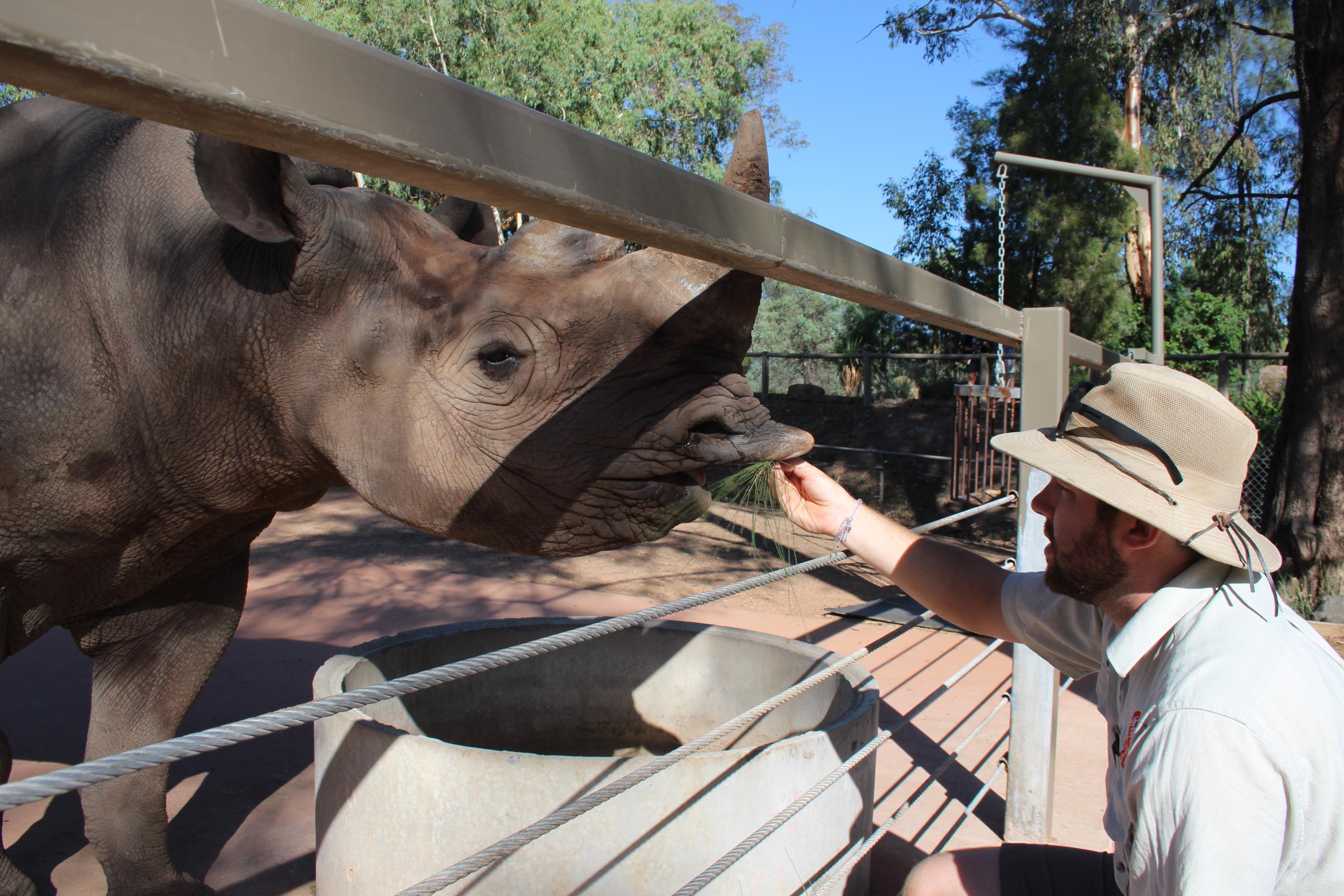Posted on 14th February 2019 by Media Relations
This Valentine’s Day, Keepers at Taronga Western Plains Zoo are hoping love is in the air for the Zoo’s Black Rhinos!
Keepers play a match-making role when it comes to breeding Black Rhinos, introducing compatible individuals based on the animals’ behaviour and observation skills of the keeper. Everyday keepers observe the animals to determine how they interact with each other. Once they are introduced keepers need to watch carefully for any signs of aggression.
Just placing any two Black Rhinos together that are not compatible may result in injuries to both individuals. Keepers undertake daily observations, looking for signs of oestrous and the watching the animals’ behaviour towards each other, before deciding to put them together. The keepers maintain diaries and calendars in which they note all oestrous behaviours and interactions, so that any keepers who may not have been present on those particular days can still know exactly where everything is up to.
There are many signs that keepers look for to confirm that rhinos will be well matched. The majority of the time the rhinos’ behaviour is an excellent indicator. When the time is right both the male and female will spend the majority of their day hanging around the adjoining fence line to the other individual.
Black Rhinos are usually spontaneous breeders and therefore do not have a set breeding season. Females will breed throughout the year and produce calves in any season. They usually have a reproductive cycle of approximately 24-29 days.
The Black Rhino breeding program at Taronga Western Plains Zoo has been very successful with 14 calves born since the program’s commencement in 1992. There are many steps involved in breeding Black Rhinos. These include the monitoring of both the females and males behaviour towards each other and the analysis of faecal samples to match behaviours that keepers see down on section.
There has been a number of introductions between Black Rhino pairs over the past few months and keepers are hopeful that they have been successful. Only time will tell.
By Jean-Pierre Venecourt
